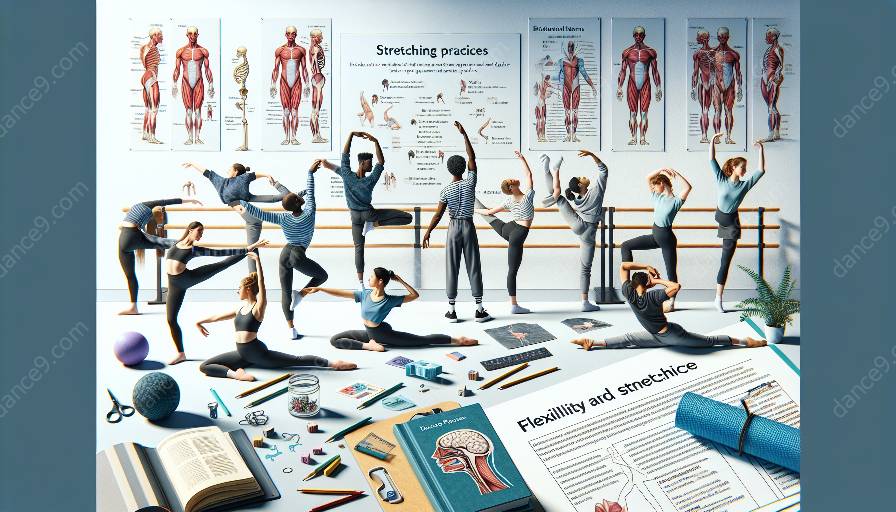Flexibility is a crucial component of a dancer's performance and overall well-being. It plays a significant role in both physical and mental aspects of dance. In this article, we will explore how flexibility impacts a dancer's performance, its relationship with stretching, and its effects on physical and mental health in the context of dance.
The Importance of Flexibility in Dance
Flexibility is defined as the capacity of a joint to move through its full range of motion. For dancers, having good flexibility is essential for achieving the movements and positions required in various dance routines. It allows dancers to perform complex and fluid movements with ease, grace, and precision.
Furthermore, flexibility enhances a dancer's ability to execute choreography with proper alignment and form. It enables dancers to achieve higher extensions, deeper pliés, and more graceful lines, all of which contribute to the overall aesthetic and quality of their performance.
Flexibility and Stretching for Dancers
Stretching plays a crucial role in enhancing flexibility for dancers. By incorporating a regular stretching routine into their training, dancers can improve their range of motion and flexibility, leading to enhanced performance on stage.
Dynamic stretching exercises, such as leg swings, arm circles, and gentle, controlled movements through a joint's full range of motion, are particularly beneficial for dancers. These exercises prepare the muscles and joints for the demands of dancing and help prevent injury. Additionally, static stretching can be incorporated to improve flexibility by holding a stretch for an extended period, allowing the muscles and tendons to lengthen and relax.
It's important for dancers to approach stretching with caution, ensuring that they warm up their bodies before engaging in intense stretching to avoid potential injuries. Moreover, consistent and proper stretching techniques can lead to long-term improvements in flexibility, aiding in a dancer's overall performance and longevity in the art form.
Effects of Flexibility on Physical Health
Having good flexibility in dance not only enhances performance but also contributes to overall physical health. Flexibility allows for better circulation, joint mobility, and muscle elasticity, which can positively impact a dancer's physical well-being.
Improved flexibility can help prevent injuries such as strains, sprains, and muscle imbalances. By maintaining a balanced and supple body, dancers are less prone to overuse injuries and can recover more quickly from physical exertion, thus reducing the risk of musculoskeletal issues.
Furthermore, flexibility supports proper alignment and posture, reducing the strain on joints and muscles during dance movements. This can prevent chronic pain and discomfort, promoting longevity and sustainability in a dancer's career.
Effects of Flexibility on Mental Health
Flexibility in dance not only influences physical health but also has significant effects on mental well-being. The practice of flexibility and stretching can serve as a form of active meditation, allowing dancers to connect with their bodies and find mental clarity.
Engaging in stretching and flexibility exercises can promote relaxation and stress reduction, providing dancers with an opportunity to focus on their breath and movements. This can help alleviate performance anxiety and foster a sense of calm and confidence during rehearsals and performances.
Additionally, the physical discipline and mindfulness involved in flexibility training can enhance a dancer's mental resilience and concentration. By developing a deeper awareness of their bodies and movements, dancers can enhance their overall mindfulness, which can have positive effects on their mental well-being both on and off the stage.
In Conclusion
Flexibility plays a pivotal role in a dancer's overall performance, impacting both physical and mental aspects of dance. Enhanced flexibility enables dancers to execute movements with precision, grace, and reduced risk of injury, while also promoting improved physical and mental well-being.
By understanding the interplay between flexibility, stretching, and their effects on physical and mental health, dancers can prioritize a well-rounded approach to their training, ultimately leading to enhanced performance and longevity in their dance careers.


































